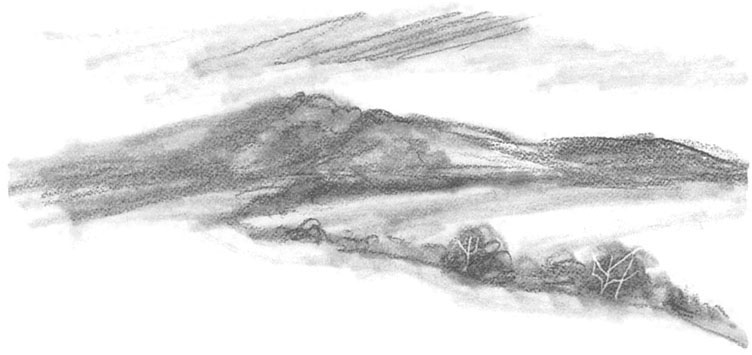
In these wide-open spaces, you may notice a line of trees snaking off in the distance. Often, these trees mark a river or stream or even a seasonal watershed that’s dry much of the year. Trees sink their roots deep in these low places, seeking moisture where they can. Including them in your landscapes makes for an interesting design element and breaks up an expanse that might otherwise lack definition.

I used a soft graphite pencil for this simple landscape, using a rolled-paper “stump” to smudge it for subtle values. To suggest the sycamore trees in the gully, I impressed the blunt tip of a nail file into the paper and then ran the pencil point lightly over the paper, leaving the trunks and limbs lighter in value.

Sycamores are beautiful trees. They have tight, scaly brownish bark below, but they shed that bark on the upper limbs to expose pale, smooth, greenish white. It’s fun to sketch them with black and white colored pencils on a toned ground, either in preparation for a more finished painting or as a finished drawing.

PRIMARY PRAIRIE
Watercolor on Fabriano cold-pressed watercolor paper
9" × 12" (23cm × 30cm)
In this little watercolor, painted on the spot on a lovely rainy day, you can see the line of trees that mark the watershed, bisecting the distant field. I used only primary colors for this one—a warm and a cool red, blue and yellow. As you saw in chapter two, you can make almost any color you wish with this simple palette.